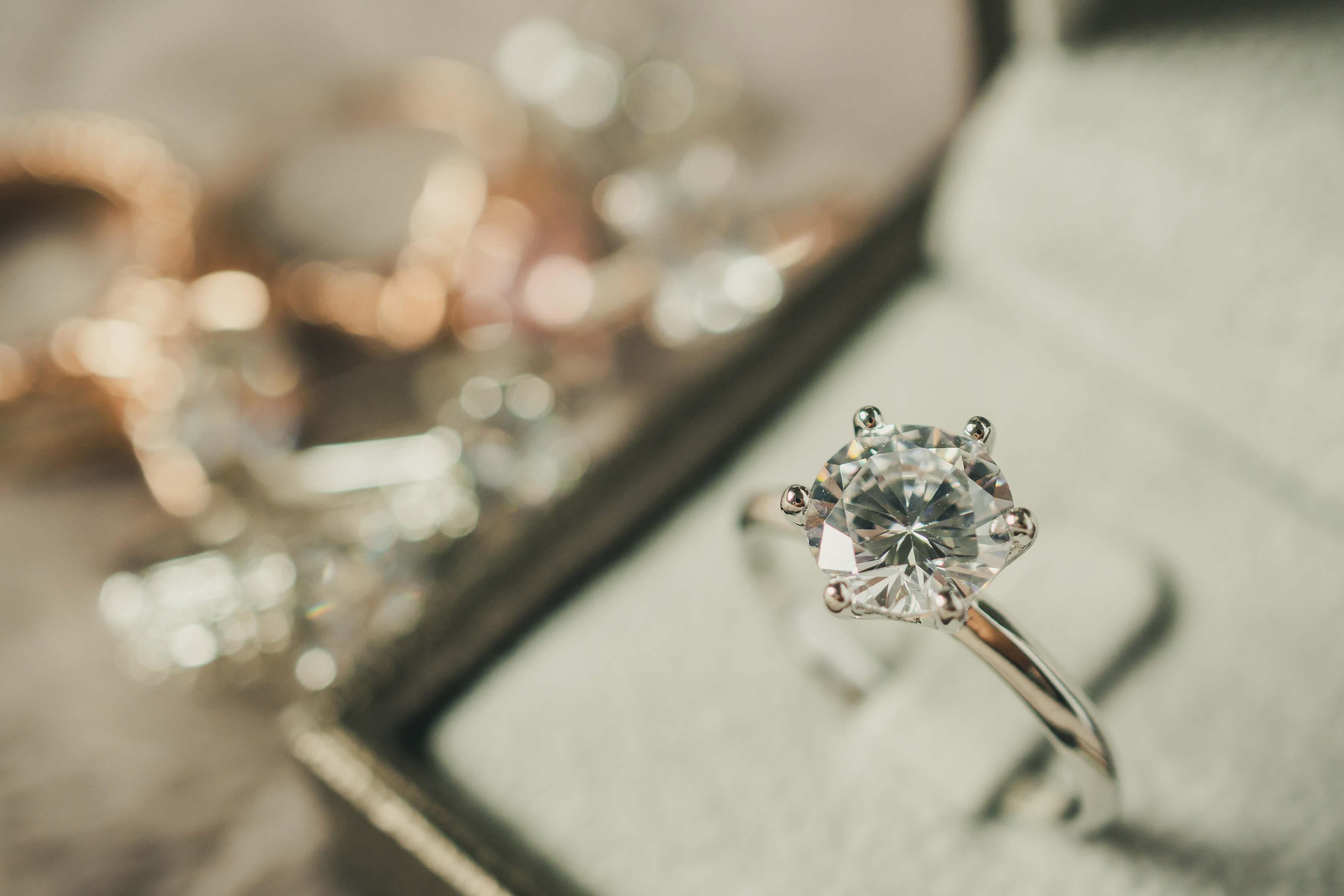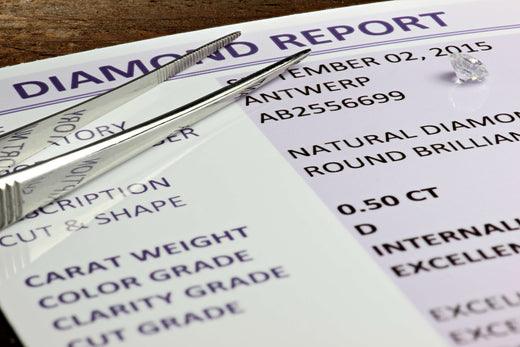
Moissanite vs Lab Grown Diamonds
Diamonds mark the epitome of fine jewelry for most of the world, with their sparkling facets sprinkling rainbow flashes and because they are the hardest substance on earth. Though not terribly rare, they are used to mark some of the most momentous occasions in life, such as diamond engagement rings, graduation presents, and more recently, push presents. However, more and more, the cost of mined diamonds is inflating, both because of economic pressures, as well as the environmental and ethical cost used to obtain them.
Lab-grown diamonds definitely offer the best alternative, because they are real diamonds without the associated costs of natural diamonds. A lab-grown diamond engagement ring has the same sparkle as one with a mined diamond because a lab diamond has the same physical properties, and chemical properties as natural diamonds, making them optically identical. However, there is still some confusion over what they are. That's why in 2019 the FTC defined lab-grown diamonds as actual diamonds, only manufactured and not mined, and limited the number of variants for polyonymous lab-grown diamonds.
Unfortunately, lab-grown diamonds are still regularly confused with diamond alternatives and diamond imitations, especially moissanite and CZ. In this article, we are going to clear up some of that confusion.
What Is A Lab Grown Diamond?
Lab-grown diamonds, also known as lab diamonds, lab-created diamonds, and man-made diamonds, are real diamonds manufactured in laboratories, instead of mined from the ground. Like natural diamonds, they are pure carbon crystals and have the same physical, chemical and optical properties as mined diamonds. They cannot be told apart by the naked eye.
They are produced in laboratories where special processes replicate some of the conditions under which diamonds form in nature, or are believed to form.
Lab-grown diamonds have become extremely popular recently, now accounting for up to 10% of those available on the diamond market. Within the last ten years, large-scale production of gem-quality diamonds in labs has provided consumers with an often more ethical and sustainable alternative to natural diamonds, and at a much more affordable price per carat.
What Is Moissanite?
Discovered in 1893 by Henri Moissan and named after him, moissanite is a very common diamond substitute but not a form of diamond itself. First discovered in a meteor crater and then synthesized in a lab, this silicon carbide (SiC) crystal is a rare earth mineral, not discovered again in nature for more than 50 years. Because its optical properties are similar, though not identical, to those of a diamond and because it comes to 9.25 on the Mohs scale of hardness, it is used in jewelry, such as moissanite engagement rings, and even some industrial purposes.
Moissanite vs Natural Diamonds
Moissanite is not a diamond, but is one of the forms of diamond simulants growing in popularity. It is considered more ethical and somewhat more sustainable than mined diamonds, though lab grown diamonds are more ethical, and often more sustainable than moissanite.
Moissanite VS Lab Created Diamonds
Moissanite isn’t a more ethical or sustainable alternative to lab-grown diamonds. Both are produced using similar laboratory processes, so there is negligible gain in terms of environmental cost there. Because they use silicon, which must be mined, moissanite crystals may have a slightly larger environmental footprint, while lab-grown diamonds can be produced with almost any available carbon source; from greenhouse gasses pulled from the atmosphere, to deceased relatives.
How can you tell the difference between moissanite and diamonds?
Moissanite has a few traits that distinguish it from diamonds. It is lower on the Mohs hardness scale, and so can be scratched or cut with a stencil made out of any harder material, such as diamonds or tungsten carbide. Since it is higher on the refractive index, it has a greater prismatic gleam, but that also means that while it might sparkle radiantly, it doesn’t have the black and white glinting wink that well-cut diamonds possess.
While there are moissanite stones that pass some diamond testing machines, there are reliable diamond testers for jewelers that will indubitably determine if a stone is a diamond or moissanite.
What are some other diamond simulants?
CZ Cubic Zirconia
This is the crystal form of zirconium dioxide (ZrO2). It is close to diamonds on the refractive index and even higher on the dispersion index, but denser than diamonds, which can sometimes be a giveaway to experts who are very familiar with diamonds. Cubic Zirconia is a common alternative, not only due to its believable imitation of some of a diamond's optical properties but also because at 8-8.5 on the Mohs hardness scale it is well suited for jewelry.
Rhinestones and types of Quartz Crystals
Rhinestones are another diamond substitute, most commonly used for costume jewelry. Rhinestones are the common name given to forms of glass, crystal, or plastics that are cut to resemble diamonds.
Cape May Diamonds and Herkimer Diamonds, are both a form of quartz crystal, of exceptional clarity and natural faceting in an arrangement similar to naturally faceted diamonds.
Lab Grown Diamonds At Michael Gabriels
At Michael Gabriels we have been specializing in customized and bespoke diamond jewelry for more than three generations, two of which are working today, ready to assist you to make the diamond jewelry of your dreams.
It seemed to us that lab-grown diamonds were the most promising and effective future for fine jewelry, and so we’ve been on that bandwagon since it started. Please let us know if you have any questions about lab-grown diamonds or their alternatives, and how we use them to produce the finest jewelry at affordable prices, in record time and at your convenience.
With an office in Soho in Manhattan, our collection digitized and available for you to peruse online, and our experts ready to take your call or message, we are sure that we can find or create the lab-grown diamond jewelry of your dreams.



